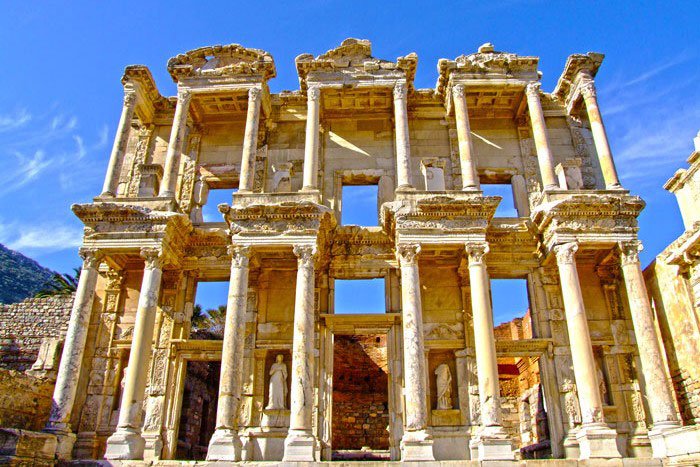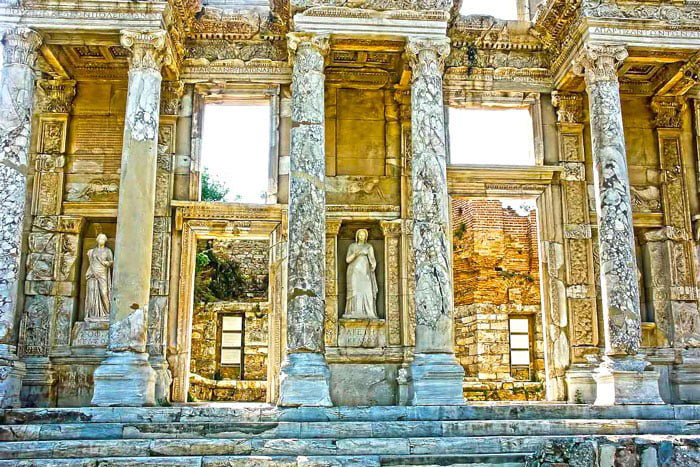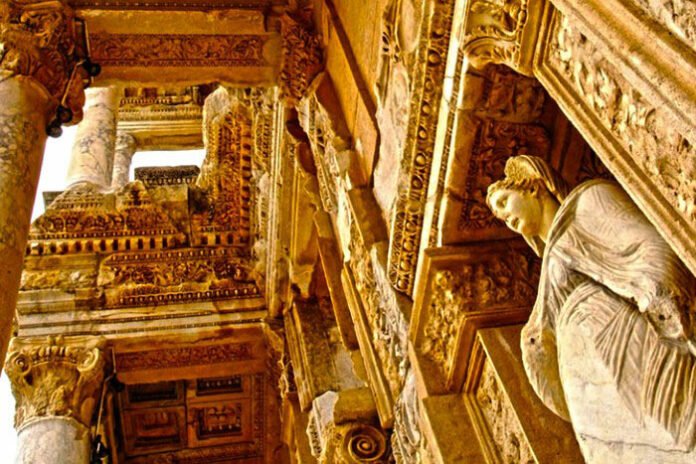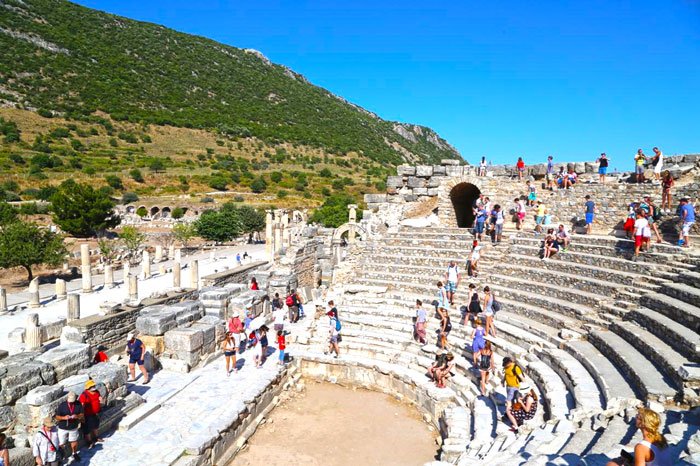Guided Ephesus Tours – Discover the Celsus Library
The Celsus Library is one of the most famous stops on guided Ephesus tours. It was built in the 2nd century CE to honor Celsus, a Roman governor of Asia. He was known for his wisdom and leadership. The library once held over 12,000 scrolls, making it one of the largest libraries in the Roman world. Today, it’s a highlight of any visit to the ancient city and features in most Ephesus sightseeing toursEphesus sightseeing tours.
You can find the library in the heart of Ephesus. It stands at the corner of Curetes Street and Marble Road. It is just left of the agora, close to the arched main entrance of the marketplace.
The library was built during the rule of Emperor Hadrian, who ruled from 76 to 138 CE. Its grand design reflects the Roman style of that time. For questions or help with booking, you can always contact us.

Architecture and Exterior of the Library
The front of the Celsus Library still stands today. It sits on a podium with nine steps and is 21 meters wide. The two-story facade includes six columns on each level. The columns have Corinthian-style tops, common in Roman architecture.
There are three main doorways into the library. Four statues stand in niches next to them. These statues represent the virtues of Celsus: wisdom (sophia), intelligence (ennoia), knowledge (episteme), and virtue (arete). Their names are written at the base of each statue.
Visitors on guided Ephesus tours admire the detailed stonework and carvings on the exterior. This library is one of the best-preserved Roman buildings still standing in modern-day Turkey. Many of our travelers combine this visit with a private Balkan trip for a full cultural journey.
Inside the Library of Celsus
The inside of the Celsus Library was about 17 by 11 meters. The floor was made of beautifully carved marble. The walls had small shelves for scrolls. A balcony on the second floor let people reach the upper shelves easily.
To protect the scrolls from heat and moisture, builders added extra wall space between the outer and inner walls. This design helped to control the temperature inside the building. A special room in the center of the library likely held a statue of Celsus himself.

Sadly, the interior was destroyed in 262 CE when the city was attacked by the Goths. However, the facade survived and was repaired in the 4th century CE. A fountain was later added in front of the building, which you can still see today on guided tours Turkey.
Book Your Guided Ephesus Tours Today
The Celsus Library is a must-see stop for anyone visiting Ephesus. It offers history, beauty, and timeless architecture all in one site. Whether you’re exploring with family, friends, or a group, this landmark adds unforgettable value to your journey.
Join one of our expert-led guided Ephesus tours and explore the Celsus Library in person. You’ll learn its full story and witness its remarkable design. For more details or to plan your visit, contactcontact us today.




